THE PERFORMATIVE NATURE OF THE NARRATIVE A Conversation between Manuel Borja-Villel and Ana Magalhães on Art Museum Collections and Art History
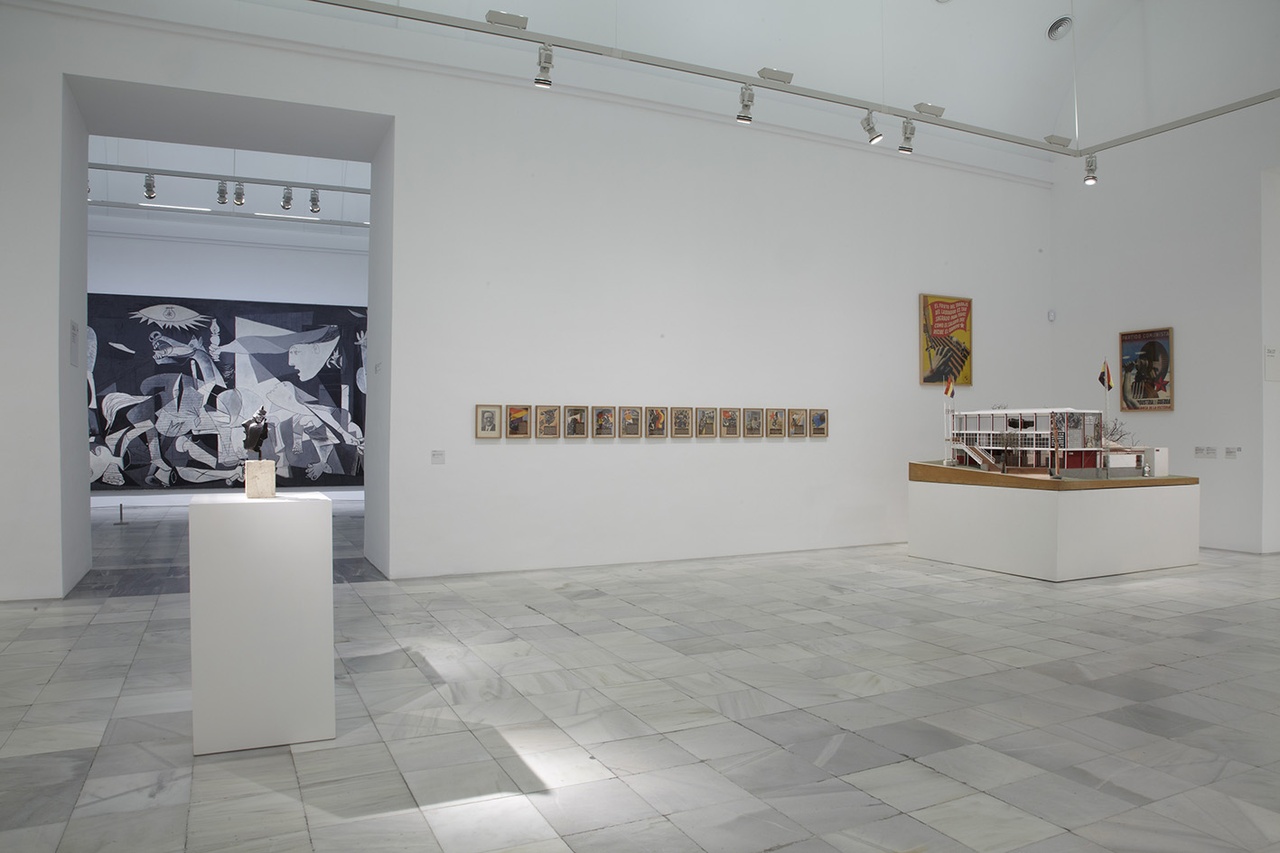
„COMMUNICATING VESSELS. Collection 1881–2021, Episode 1. Avant-Garde Territories. City, Architecture and Magazines“, Museo Reina Sofía, Madrid
ANA MAGALHÃES: Considering that the Museo Reina Sofía has just inaugurated a revised display of its permanent collection, I want to talk to you about the relationship between art history and collecting as well as curatorial practices in the museum. [1] The discipline seems to have become very much disconnected from the museum world, but there was a time when the two were working hand in hand.
MANUEL BORJA-VILLEL: As an art historian, dealing with the object is essential for me. Of course, when I say “object,” I don’t mean it in a modernist way but something closer to the hyperobject of speculative realism. Any art object has an element of resilience and enigma, which is important to me and therefore reflected in the new structuring of the collection; there is a dimension that is enigmatic and requires the involvement of the public. There is, of course, also a side that is discursive. For instance, three spaces of the galleries are each devoted to writers who are very different from one another: Carl Einstein, Georges Bataille, and André Breton. When the public visits these rooms, they’ll encounter distinct discursive structures in the writers’ documents, but many of the artists addressed by these three authors are the same. The three critics were all attracted to the practices of Salvador Dalí, Joan Miró, and Pablo Picasso, among others – their interest did not include many women artists, but I will come back to this issue later on. They looked at the practices of these artists from different perspectives. The fascinating thing is that the “examples” were not exchangeable for their arguments, which present very specific ideas, which these authors would defend to the end. However, to me the beauty of dealing with the artwork is that it has a life of its own. This is crucial because it favors the agency – or agencement, in the Deleuzian sense – of the public when they visit the museum. The context of reviews and documents could be dissimilar, the discourses they are embedded in differ, but they include artworks that, after all, are intrinsically related. So, when curating, somehow, I must choose what to share with the visitors. That relationship, that tension between the discourses and the objects, is very relevant to me. I revindicate art history in the museums while I revindicate the performative aspect of the objects. Sometimes it looks like art history is only based on facts, but as you know, that is not true.
MAGALHÃES: Yes, of course. But in the context of contemporary art curatorial practice, there has recently been a complete refusal of the discipline in light of its colonialist, imperialist heritage. In the same context, the very concept of history is portrayed as a mere chronology. But you cannot think about art history today as a mere chronology of facts on art.
BORJA-VILLEL: You are right. The way I think about history is not linear, but espiralar (spiral): things come back, and it is possible to rewind history in the way we write it. This conception differs greatly from the teleological “euchronicity” that has characterized Western art history. You mentioned a keyword: discipline. We know that no discipline is neutral, that each has its rules, and that the questions it puts forward already determine the answers. It is evident that any discipline needs to be questioned, but this can only come from the outside.
MAGALHÃES: Both art history as a discipline and curating an exhibition are ways of narrating art. In the 19th century, the idea of the history of the nation was completely embedded in the display of a museum collection. With the transformation and the specialization of the art museum (the emergence of the modern art museum and the contemporary art museum), a very formalistic approach was established, which seems to have disconnected the art museum from this duty to display history for the general audience.
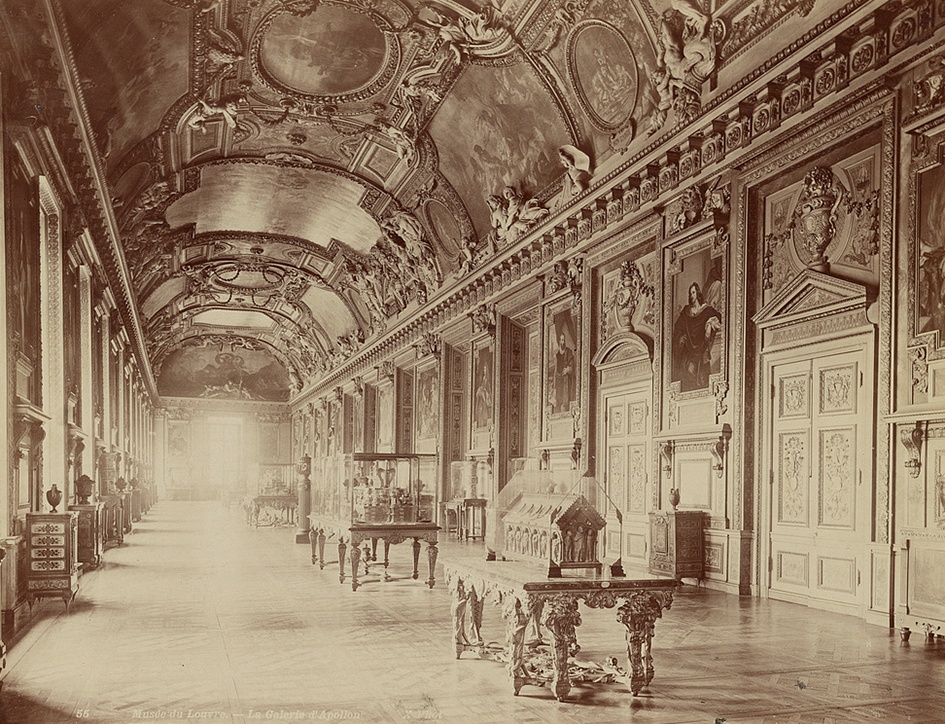
Musée du Louvre, Galérie d'Apollon, 1900
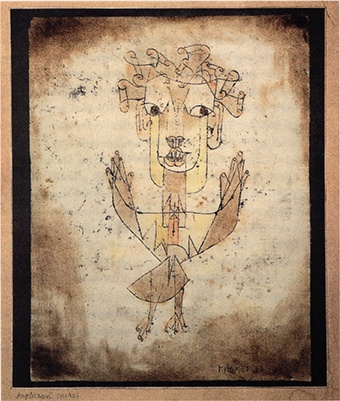
Paul Klee, „Angelus Novus“, 1920
MAGALHÃES: Regarding the relation between art history and art museums, it is also important to think about how collections are conceived. At a certain period of time, there was this belief that you could go to the art market and buy a sample of each of the most celebrated artists, and this would be enough for you to teach art history to your audience. But no Pablo Picasso painting will function exactly the same when hung at Museo Reina Sofia or MoMA, or in São Paulo or London.
BORJA-VILLEL: This obsession with having examples for teaching is never productive because works of art are not tokens, and by looking at them as if they were, you get a very limited idea of the artist’s practice. If you are aware of it, then you can build from that limited point of view, but when you believe it to be a universal perspective, then it is totally wrong. Works of art are performative, and the work of an artist tells a different history in one place than in another. You need an archive to contextualize, to understand – but it is not enough. We also need to change our ethical and epistemological codes. Solidarity is a word that echoed through many online meetings in the early seasons of the Covid-19 pandemic, and we should stick to it. Museums are 18th-century structures, and, in a way, they are in ruins. This is the truth. From ruins, you can build other things. But not like a phoenix, an idea which reminds me of the multiple mutations that capitalism and colonialism have developed during the last centuries. You need a radical interpellation to change things. You need to break the frame. The beginning needs to be an understanding of the existence and the right of radical alterity and radical opacity, of the impossibility of knowing the other. There is no production of critical knowledge without interpellation, and this always comes from an outside. It is important to understand this collective intelligence as a result of negotiations between different types of knowledge and life forms. These negotiations impact not just the way we write history but how we organize archives and imagine new dispositives of mediation. Western art history is very much based on the book and the object, but what do we do with cultures that could not do those objects, and whose history is oral? What do we do with those who live in a land that is not their own and whose forms and vocabulary are imposed upon them?
MAGALHÃES: Of course – especially because the international standards of accessioning, documenting, and displaying are also Eurocentric. Getting involved in such issues as inventories and glossaries would be understood as a mere technical nuisance by my students at the university. For them, being a curator means making exhibitions, and not taking care of anything that comes before or after the exhibition.
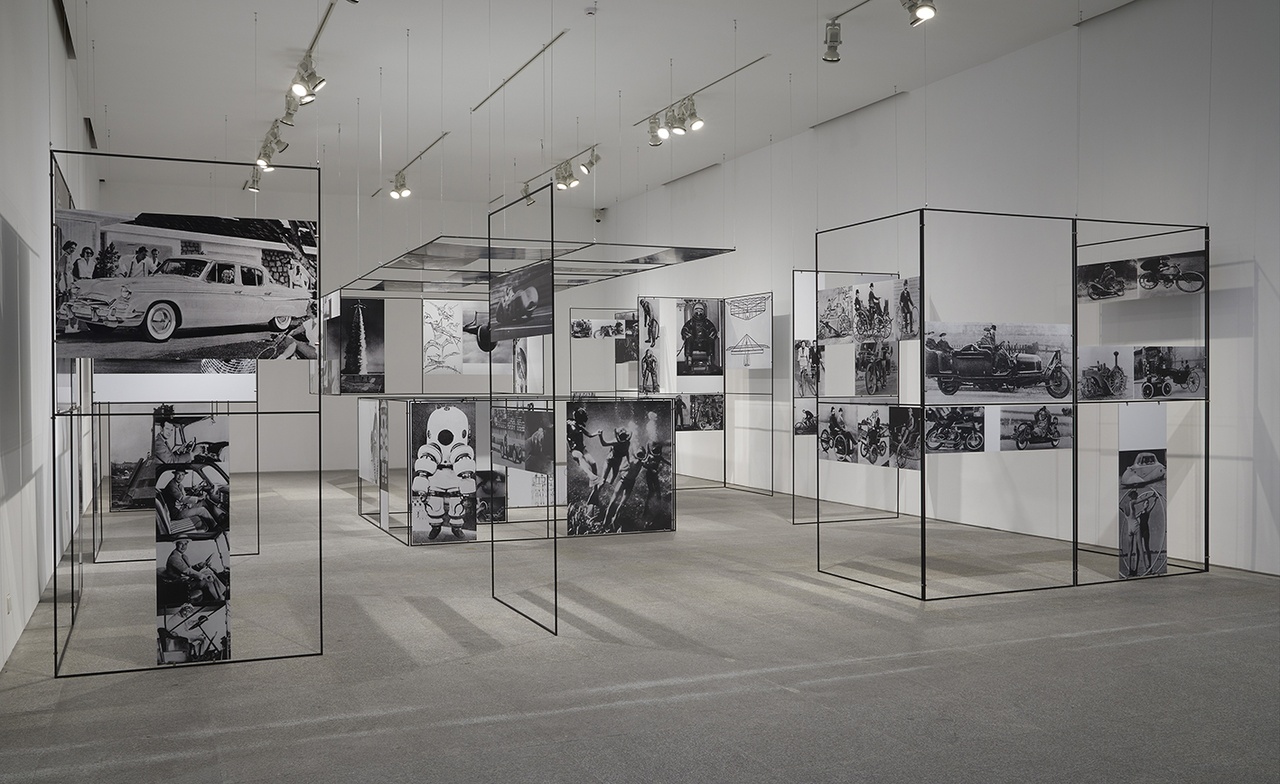
„COMMUNICATING VESSELS. Collection 1881–2021, Episode 4. Double Exhibition: Art and Cold War“, Museo Reina Sofía, Madrid
BORJA-VILLEL: There is no separation between conceptual and technical; everything in a museum or in a university is both at the same time. As we know, every technical decision is always political. I am the director of a public institution. And unfortunately, there are things I know I cannot change, but you should be aware of them and look for ways to fight or denounce injustices, precarity, fragilization, etc. Culture, research, and knowledge are precarious in many ways. They are precarious in terms of salaries, in the way most researchers, artists, and curators are paid. We are also inside a system that pushes us toward the production of events, one after another, with very scarce human resources. That makes it very difficult for research. Administrative procedures of both public and private institutions are usually goal-oriented. However, creativity is based on invention, accidents, discovery. When results of art or cultural production are already known from the beginning, you have a problem. In this context, I think it is important that we reflect on the terms of our writing of art history and resist any sense of fake immediacy. To me, the Spanish cultural critic and writer Rafael Sánchez Ferlosio, who unfortunately is barely known outside of the country, remains an exemplary figure. Not only did he command a critical lucidity, but he also wrote sentences full of subordinates that appeared infinite and sometimes resulted in paragraph-long phrases. These elements of resistance in favor of knowledge and slow time are things to be considered in art historical writing.
MAGALHÃES: Recently, I experimented with undergraduate students to work on quickly writing short texts for a museum context, like Instagram captions about certain pieces in the collection. They were able to choose whatever they wanted to. It was a very interesting experience because they have new ways of approaching writing.
BORJA-VILLEL: Yes, resisting certain hegemonic formats and immediacy does not imply going back to the past. That is why we structured our collection in episodes and thought of it as a series. The notion of series also breaks with the idea of linear modernistic time. I once went to a lecture by Fredric Jameson here in Madrid without really knowing what he was going to talk about. I was surprised when he started discussing The Wire, the US TV show. To him, The Wire was the 21st-century equivalent to Honoré de Balzac’s novels. But unlike the great stories of the 19th century, the series lacks a center. In general, the narrative of TV shows is immanent and fragmented, not resolved in unity. The script is made and remade many times, and the existence of a preestablished ending is not essential. As much as it has been made following a criterion, its episodes can be viewed separately. The reconfiguration of the Reina Sofía Collection, occupying one hundred and a half galleries, responds to this scheme and is now presented in eight expansive episodes. Like with a series, you can engage with a few galleries every other day, every week, or every month; or, if you have enough stamina, you can binge it and see the entire series at once. The narrative of the collection is also fragmentary. Visitors can choose fragments, and they know that their perception will be also fragmentary. There is an openness to it that allows them to revisit it all the time, making them aware that these changes are happening. To us, it is essential that all the categories are constantly questioned, which implies the participation of collectives, communities, agents, historical witnesses, and artists who react to what is exhibited, but also, and especially, to those things which are not. These participations could take different forms: seminars, actions, performances, lectures, etc. The collection now functions like those oral stories that people used to listen to and retell other people, and by doing so, they kept on changing the stories and made them their own.
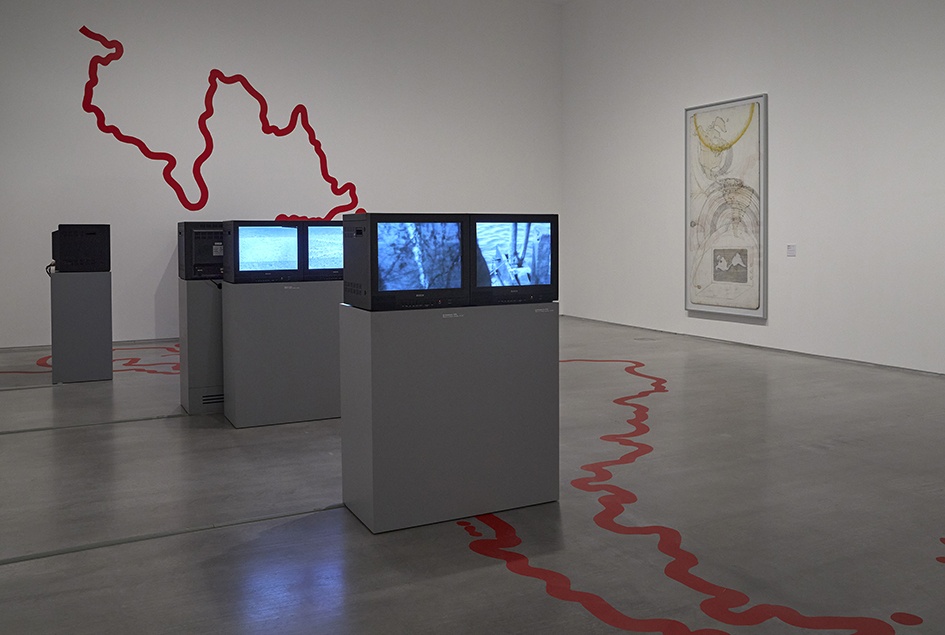
„COMMUNICATING VESSELS. Collection 1881–2021, Episode 5. Enemies of Poetry: Resistance in Latin America“, Museo Reina Sofía, Madrid
MAGALHÃES: Tell me about your experience with the process of reworking the display of the collection of Reina Sofía. How long did it take and how many people collaborated to put this together?
BORJA-VILLEL: The first radical modification happened in 2008, when I had just been appointed director of the museum. It addressed the way Guernica was presented. The first thing we tried to do was to contextualize and re-historicize the painting. When I arrived, it was kind of isolated, like a monument. Only other paintings by Picasso were hung in its proximity. There were also no documents on display because the idea was that works of art talk to you without any mediation. The first move, then, was to include a maquette of the pavilion of the Spanish Republic at the Universal Exposition of Paris in 1937, where *Guernica* was originally exhibited and for which it was conceived, and where works by artists such as Alexander Calder, Joan Miró, Julio González, Josep Renau, Francis Bartolozzi, Juana Francisca Rubio, and others were also shown. We also considered the political context of that Exposition. Looking at historical postcards, you can see the German and the Soviet pavilions at the entrance, symbolically fighting against each other. Picasso was aware of all that, and the element of anachronism in his work, which is done in black and white and is thus in relation to the newsreels and the photographs of the papers of the period, in which he witnessed the cruelty of the war. He also went back to Francisco de Goya, Jacques-Louis David, and other “masters of art history” to understand the role of an artist in a period of profound crisis. So, by changing the display, we shifted the emphasis from the “monument” to the “process.” In addition, we realized the need to build the history of the Spanish diaspora, our relationship with Spain’s colonial past, etc. On different occasions, we made different changes and included new sections. That also made us rethink the way temporary exhibitions are conceived. Normally, temporary exhibitions always have something of spectacle. That worried me and made me very uncomfortable. Thus, we started working on temporary exhibitions as experiments to think of a bigger, more complex narrative. We took the same approach to our Study Centre, in which seminars, conferences, and workshops helped us and our collaborators to rethink the collection and its contents. The collection currently ends with a kind of short epilogue, which is the result of a three-year seminar on the “politics and aesthetics of memory” that Nelly Richard conducted with some students. In it, the feminist demonstrations and protests in Chile of 2019 are presented in contrast to the neoliberal policies of the “Chicago Boys” implanted by Pinochet’s coup d’état of 1973, closing a historical period. The collection reflects how the various departments of the museum work together. So, the collection is not a collection in the sense of collecting – in the sense of accumulating treasures – but a collection as a form of understanding and knowledge production. How many people have worked on it? A multitude.
MAGALHÃES: I just want to ask you one final question. I understand that Reina Sofía is redisplaying its collections while other museums around the world are doing the same thing. This was the case at Centre Pompidou in 2013 and, more recently, at MoMA in 2019. It seems to me that in these instances, the two museums were really trying to, again, acquire additional works to fill in the gaps, so to speak, or to build different narratives.
BORJA-VILLEL: If you just think about filling the gaps, you already have a problem because you leave the frame intact. In terms of quantity and quality, both Pompidou and MoMA have two major canonical collections of the 20th century, no doubt. But that could be a problem as well. In the moment that, let us say, you have a room with ten Mark Rothkos, ten Barnett Newmans, or whatever very expensive artwork, and you have all those patrons that gave them to you, or you have the tourists that go to visit the institution and want to see them – it is going to be very difficult, if not impossible, to remove them and to design a room in which they will give place to a document, a book, or a “minor” work of art. I don’t just mean that what we need to do is to bring these “minor” things into the history of the big pieces, but what I am asking for is to change the structure, the hierarchy. What matters is the development of new narratives. It is not so important to fill gaps, but to change structures. It is not about closing narratives, but about opening them.
Manuel Borja-Villel is director of the Museo Reina Sofía in Madrid, appointed in January 2008. Previously, he was director of the Fundació Antoni Tàpies in Barcelona (1990–98) and of the Museu d’Art Contemporani de Barcelona (1998–2008). His most recent book, Campos magnéticos: Escritos de arte y política (Arcàdia, 2020), reflects on alternative forms of institutionality.
Ana Magalhães is an art historian, associate professor, and curator who is currently director of the Museum of Contemporary Art of the University of São Paulo in Brazil. Her research concerns the visual arts in the 20th century from a transnational perspective, with special attention given to the artistic exchanges between Italy and Brazil.
Image credit: 1. Courtesy Museo Sofia Reina, photo Joaquín Cortés and Román Lores; 2. Public domain; 3. Courtesy Museo Sofia Reina, photo Joaquín Cortés and Román Lores; 4. Israel Museum, public domain; 5. Courtesy Museo Sofia Reina, photo Joaquín Cortés and Román Lores
Note
| [1] | See “COMMUNICATING VESSELS: Collection 1881–2021” , Museo Reina Sofía. |

